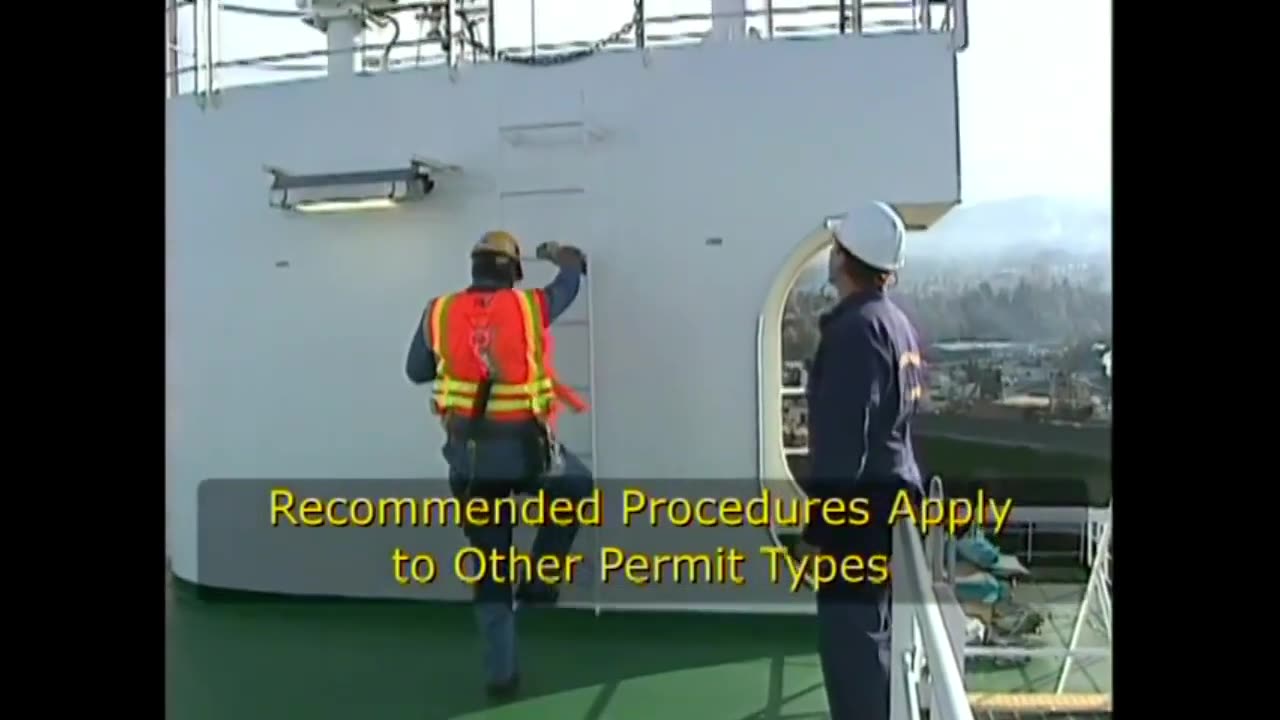Premium Only Content

Permit To Work System
The **Permit to Work (PTW) System** is a formalized framework used to control high-risk activities in workplaces such as construction sites, factories, and oil rigs. It ensures that such activities are carried out safely by identifying potential hazards, implementing necessary precautions, and obtaining proper authorization before work begins.
---
### **Purpose of a Permit to Work System**
- To manage and mitigate risks associated with hazardous activities.
- To ensure clear communication between all parties involved.
- To document and formalize safety measures.
- To comply with legal and industry safety standards.
---
### **Key Components of a Permit to Work System**
#### 1. **Scope of Work**
- Details of the task to be performed, including the location and duration.
- Description of equipment, tools, or materials to be used.
#### 2. **Risk Assessment**
- Identification of potential hazards (e.g., fire, toxic gases, high voltage).
- Evaluation of risks and required control measures.
#### 3. **Authorization and Approval**
- Designated personnel, such as supervisors or safety officers, approve the permit after verifying all precautions are in place.
#### 4. **Safety Precautions**
- Specific measures to control risks, such as isolating energy sources, providing PPE, or setting up barriers.
#### 5. **Roles and Responsibilities**
- **Permit Requester**: The person or team initiating the task.
- **Permit Issuer**: Ensures all safety measures are implemented before issuing the permit.
- **Performer/Worker**: Executes the task according to the permit conditions.
- **Permit Receiver**: May monitor or coordinate during the task.
#### 6. **Validity Period**
- The duration for which the permit is valid, with clear start and end times.
- Provisions for revalidation if the task extends beyond the validity period.
#### 7. **Closure and Handover**
- Confirmation that the task is complete.
- Inspection to ensure the area is safe for resumption of normal operations.
---
### **Types of Permits in a PTW System**
1. **Hot Work Permit**: For activities involving open flames, sparks, or high heat (e.g., welding, cutting).
2. **Cold Work Permit**: For non-heat-related tasks like maintenance, inspection, or painting.
3. **Confined Space Entry Permit**: For work in spaces with restricted entry/exit or hazardous atmospheres.
4. **Electrical Work Permit**: For handling live electrical systems or equipment.
5. **Work at Height Permit**: For tasks performed at elevated levels.
6. **Excavation Permit**: For digging or ground-penetration activities.
---
### **Steps in the Permit to Work Process**
1. **Initiation**: Worker or supervisor identifies the need for a permit and requests one.
2. **Hazard Assessment**: Conduct a risk assessment to identify potential dangers.
3. **Planning and Precautions**: Specify necessary control measures and ensure they are implemented.
4. **Approval and Issuance**: Supervisor or safety officer authorizes the permit.
5. **Execution**: Workers perform the task as per the permit conditions.
6. **Monitoring**: Continuous observation to ensure compliance with safety measures.
7. **Completion**: The work is inspected, and the permit is closed or extended if needed.
---
### **Benefits of a Permit to Work System**
- Reduces the likelihood of accidents and incidents.
- Ensures proper communication among workers, supervisors, and safety personnel.
- Provides a record of compliance with safety protocols.
- Helps in auditing and improving safety practices.
Would you like templates, examples, or detailed guidance on implementing a Permit to Work System in a specific industry?
-
 20:24
20:24
HSESafetyInformation
9 months agoKABULI PULAO RECIPE - Original 40+ KG Afghani Meat Pulau Prepared - Street Food Qabili Plav Recipe_2
38 -
 1:16:04
1:16:04
Rebel News
2 hours agoHealth-care collapsing, Bloc says Quebec sends Alberta $, US Ambassador's advice | Rebel Roundup
8.67K15 -
 1:44:03
1:44:03
The Shannon Joy Show
2 hours agoThe BEST Of Shannon Joy 2025! Special Thanksgiving Holiday Compilation
12.4K -
 1:07:25
1:07:25
Sarah Westall
18 hours agoSarah Westall is Not a Porn Star – Conversation w/ Stuart Brotman
10K11 -
 2:59:36
2:59:36
Wendy Bell Radio
10 hours agoPoint Blank Hate
74K103 -
 4:56:43
4:56:43
MrR4ger
7 hours agoWARLOCK SOLO SELF FOUND HARDCORE - D4RK AND D4RKER HAPPY TURKEY DAY RUMBLEFAM
16.8K1 -
 1:33:31
1:33:31
Barry Cunningham
15 hours agoBREAKING NEWS: KASH PATEL AND DOJ HOLD PRESS CONFERENCE UPDATE ON NATIONAL GUARD ATTACK
123K66 -
 1:22:22
1:22:22
iCkEdMeL
5 hours ago $13.72 earned🔴 BOMBSHELL: DC Shooter Worked With CIA-Backed Unit in Afghanistan, Officials Say
28.8K19 -
 17:28
17:28
Tactical Advisor
1 day agoComparing the NEW Cloud Defensive EPL
25.1K1 -
 LIVE
LIVE
freecastle
13 hours agoTAKE UP YOUR CROSS- THANKSGIVING MUSIC EXTRAVAGANZA!
19 watching